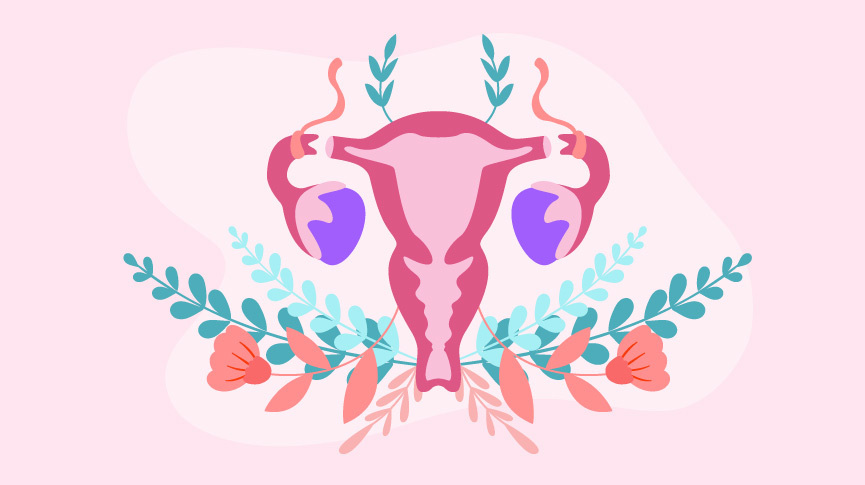What is Postpartum Sterilization?

This article was medically fact-checked by Consultant Obstetrician and Gynaecologist Dr. Shree Datta.
How many babies you decide to have – or not have – is totally up to you.
Many people make a conscious decision to become “sterilized”, or “get their tubes tied”, soon or immediately after giving birth. Why they choose to do this is up to them, and they don’t need to justify their decision to anyone else.
Postpartum sterilization, also known as tubal ligation, is a form of birth control that is permanent in most cases. It is done within a few hours or days after someone gives birth.
In the United States, people choose to be sterilized after eight to nine percent of births.
What are the methods used for postpartum sterilization? How does it differ depending on birth circumstances, and are there any risks to the baby and the birthing person?
Let’s find out!
Methods Of Postpartum Sterilization
There are a few different methods of postpartum sterilization. The first step no matter what method is used is thorough counseling and discussion with their provider.
This helps to ensure that there is informed consent around the risks, benefits, logistics of the procedure, and possible psychological implications. If a partner is involved, they will most likely be present for this conversation. Everything that happens during this counseling will be documented in your medical record. Some hospitals may require a separate “sterilization permit” to be signed in addition to informed consent forms, to prevent litigation.
Ideally, this procedure is done before the uterus returns to normal size and location, which can take weeks after giving birth.
The official name for the removal of the fallopian tubes is a salpingectomy, or partial salpingectomy if just a portion is removed.
For cesarean births, sterilization is typically done at the same operation, after delivering the baby and the placenta, and while the patient is still in the operating room. This prevents them from needing further incisions and surgery. The OB will close the uterine incision, but keep the abdominal one open, and proceed with removing a portion of or all of the fallopian tubes,
Postpartum sterilization after vaginal birth is a laparoscopic procedure done by making a small incision in the abdomen, just under the belly button. The OB then brings the fallopian tubes up through the incision, where they are then closed off and cut, or completely removed.
Stitches are then used to close the incision. This is a quick operation, lasting about thirty minutes. In the UK, it’s usually done as a planned procedure 3-6 months after the delivery of your baby.
Some people may want to have a hysterectomy or removal of the uterus, but this is typically done for other medical conditions outside of just birth control.
Helpful Information About Postpartum Sterilization
- If someone has significant complications during or after birth, they may need to postpone the procedure.
- Sterilization at the time of Caesarean section avoids a second operation.
- If you have a planned vaginal birth and are planning on postpartum sterilization, you may be strongly discouraged from eating during labor.
- Postpartum sterilization is often considered elective, and some people may have difficulty being approved for it or are turned down for various reasons.
- You still get your period if only a portion of the fallopian tubes are removed.
Healing From Postpartum Sterilization
You’ve just had a baby, and your healing needs to be prioritized. It can be difficult to tell what is post-birth healing, and what is from the sterilization procedure.
Here are some helpful things to plan or keep in mind when healing from a vaginal birth or cesarean section.
Be sure to keep the incision site clean, and watch for potential signs of infection like inflammation, redness, or fever. You may feel crampy, dizzy, nauseous, or bloated while healing.
Keep in mind that recovery may be longer for those who completely remove their fallopian tubes or have a hysterectomy.
Risks Of Postpartum Sterilization
Potential risks of postpartum sterilization include bleeding, infection, and having an allergy to the anesthesia used.
Tubal ligation is a permanent procedure and if you attempt to have it reversed, you likely will not be able to become pregnant again. For those who do become pregnant after getting their tubes tied, there is a greater risk of ectopic pregnancy.
The biggest thing to keep in mind when considering postpartum sterilization is that it has a higher failure rate. This is why providers make you undergo counseling and an extensive informed consent process. If you choose to get sterilized and decide you want more children, later on, there are more paths to parenthood like adoption, fostering, and surrogacy.
Consider other contraceptive options – such as the coil or vasectomy
Facts Checked By:

Dr. Shree Datta is a Consultant Obstetrician and Gynaecologist in London, specialising in women’s health including all menstrual problems such as fibroids and endometriosis. Dr. Shree is a keen advocate for patient choice, having written numerous articles and books to promote patient and clinician information. Her vision resonates with INTIMINA, with the common goals of demystifying periods and delivering the best possible care to her patients.
Article written by:

Natasha (she/her) is a full-spectrum doula and health+wellness copywriter. Her work focuses on deconstructing the shame, stigma, and barriers people carry around birth, sex, health, and beyond, to help people navigate through their lives with more education and empowerment. You can connect with Natasha on IG @natasha.s.weiss.


